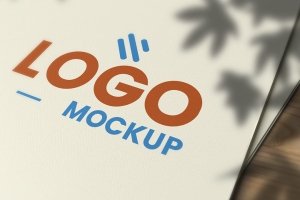Deciding to create a logo for your brand is an exciting moment for any business. A logo is a visual representation of everything your brand stands for, including the products you offer, the services you provide, and your company culture or message. Businesses pour hundreds or even thousands of dollars into developing their brand and to stand out against the rest of the competition.
Do you need to trademark your logo?
With so much time and money invested in creating your business, it should be a no-brainer that you would want to protect your brand’s logo. While businesses don’t necessarily need to trademark a logo, doing so can give the brand added protection.
In the United States, your customized and originally designed logo is theoretically protected by “common law” rights as soon as you start using the design on your online and offline marketing materials. Unfortunately, this may not stop your competition from creating a similar logo or business name. This is where filing a trademark for your logo can come in handy.
What can happen if you don’t trademark your logo?
Imagine this nightmare scenario: You are a small business owner who came up with a clever logo design, business name, and slogan. You paid good money for it and have started to market it across a variety of channels. As your brand becomes more recognizable across the area and your revenue grows, your competition becomes aware of your efforts. Perhaps a year or two later, you are blindsided by a lawsuit.
This lawsuit states that your logo design too closely resembles that of your competitor’s logo. The opposing company has stated that your logo looks too similar to their own and is, therefore, causing customer confusion, loss of brand confidence, and loss of revenue. You must now pay a hefty fine and go back to the drawing board to recreate your brand. Your business now has a tarnished reputation because perhaps the local news outlets picked up on the story.
Unfortunately, this is a common occurrence for small business owners who did not take the time to trademark their business name and logo. To avoid situations such as this one in the future, it is always a good call to trademark a logo. This is a legal agreement that tells all other businesses that your business name and logo design are yours and only yours. You can also opt for a trademark watch service. This service can help you monitor your brand for potential infringement. These tools also allow you to promptly respond to any conflicts or new trademark registrations, possibly alleviating major legal conflicts down the road.
What does a trademark protect?
Trademarks protect words, phrases, symbols, designs, or a combination of these elements. The purpose of a trademark is to distinguish a brand’s identity in the market. In this case, your logo is what sets your brand apart from your competition and is a representation of what goods or services you provide your customers.
A few common elements that trademarks protect include:
- Logo designs
- Company taglines
- Business names
- Company slogans
When filing for a trademark with the US Patent & Trademark Office, you are essentially protecting your logo and preventing others from stealing your intellectual or branded property. To further protect your logo, you can also copyright the design. A copyright is only worthwhile if you plan to use your logo on your website, promotional products, or print materials such as brochures, paintings or photographs.
When should you trademark your logo?
The best time to trademark a logo is immediately after the design is finished. Ideally, you should look to trademark your logo design at the same time you incorporate your business. If you are working with a logo designer or create your logo using an online logo maker, check to see what rights you have to your design. The bottom line is: you should trademark your logo sooner rather than later. You never know if there might be a backlog of requests at the USPTO or if another business owner is coming up with the same branding as you.
How to trademark your business logo
Now that you understand what a trademark is, what it protects, and what can happen if you don’t register, it’s time to learn the processes of trademarking a logo. Below is a step-by-step guide to helping you navigate this process.
-
Design a logo.
In order to trademark a business logo, you first need to create one. You can either enlist in the service of a professional logo designer or use a logo maker tool. Whichever method you choose, just know that the possibilities for a unique design are virtually infinite. You can choose any color combination under the sun, opt for any font (or even create your own font), and design any icon to accompany your business name. Shapes, symbols, images, and words are what make up a great logo design — all you have to do is ensure it is unique to your business.
-
Conduct a trademark search.
After you have finished making your business logo and have settled on a name for your business, it’s time to make sure that your ideas don’t already exist. Before you file for a trademark, it is pertinent that you first check if it’s available for registration. We recommend using MyCorporation’s Trademark Search tool which scours the USPTO for currently registered and pending trademark applications. Before you do this, don’t forget to ask yourself this simple question: does my logo look similar to anyone else’s? If yes, you should go back to the drawing board before conducting a trademark search.
-
Make design adjustments.
Your logo design should be distinctive enough to trademark. The general rule of thumb is that 20% or more of your design should be different from any other logo. Consider foregoing designs that have commonly used icons such as hearts, stars, arrows or other common geometric shapes. Instead, look for symbols that are associated with your industry and think about how you can tweak them to have them accurately represent your business. If you are going to use a common symbol or logo icon, make sure that you change out the color, outline, font style, and business name to make it unique enough to earn a trademark.
-
Apply for a trademark.
Once you have finished your logo design and have found that no other businesses have a similar trademark, you should start the application process. Filing for a trademark costs as little as $199, a worthwhile investment if it means protecting your brand. The application is time-consuming, but if you have all of your business information organized and at arm’s reach, you should be able to answer each question with ease.
There are a number of different sections in the application. These sections include:
- Contact information
- Selecting your trademark
- Class of goods and services
- Description of goods and services
- Trademark use status
- Owner/applicant information
-
Wait for approval.
Once you submit your trademark request to the USPTO, it will be reviewed by a Trademark Examiner. The time it takes to review a trademark request depends on the backlog of requests already in the queue. Keep in mind that over 7 million trademark applications were filed worldwide in 2016, so it may take up to five months to hear back regarding whether or not your trademark was accepted or rejected.
If your logo design is approved, the USPTO will then provide you with instructions on how to properly maintain your logo as well as how to file a complaint. You should also read up on when you have the grounds to file a complaint. Opting for a trademark watch service is also a good idea if you plan on expanding your brand.
If your trademark request is rejected, that may be due to the following issues:
- The logo or business name degrades national symbols
- Your logo or business name is scandalous or immoral
- Your branding is too generic
- The logo design or business name is too similar to another business’
Is trademarking a logo a good option?
To trademark, or not to trademark, that is the question. If you are planning on expanding your business across state lines or are planning on reaching an international audience in the next few years, then trademarking your logo design should be a top priority. If your industry is highly competitive or you have completely reinvented the wheel when it comes to a certain product or service, then consider filing for a trademark.
If you aren’t sure how long you will be in business, then we recommend not trademarking your business name or logo. The first 12 months you are in business are often the most financially difficult months for any startup. If you are hesitant to trademark your logo design, then perhaps wait 12-14 months after opening your business. It is also not recommended that you trademark your business if you know you will be redesigning your logo in the next few years. Going through the trademark process is time-consuming and costs money, so you want to make sure you only undergo this endeavor for a logo design you really love.
Ready to create a unique and fully-customizable business logo? Make a logo for free using our online logo maker.




